Hilton’s Tru Brand Aims for Innovation
A top Hilton executive shares insights into developing a new mid-market hotel brand that offers simplicity and value without compromising quality and design.
By Mallory Bulman
Anyone who has booked a vacation lately knows about the disparity between price and quality in the hospitality sector. There aren’t many options for those looking for a mid-price hotel, and many travelers have accepted that they must either splurge or settle. Hilton Worldwide is stepping into the middle ground with the introduction of its new Tru by Hilton brand.
In response to demand from owners for an experience-driven, innovative property with strong perceived value, Hilton launched the new brand in January to meet the needs of travelers who are looking for a distinctive yet reasonably priced option. As Hilton Worldwide president & CEO Christopher Nassetta summed up the goal in announcing the new brand: “Tru will provide guests with a high-quality, contemporary, consistent and fresh experience at a great value for customers, while at the same time delivering strong returns to our owners.”
The new brand is proving to be a fast starter, with 48 hotels in the development pipeline and another 170 deals in the works. Locations include markets like Atlanta, Dallas, Houston, Chicago and Portland, Ore. In March, Hilton broke ground on the inaugural Tru by Hilton, a 98-key property in McDonough, Ga., a suburb of Atlanta.
An emphasis on operational efficiency frees up resources for a bevy of innovative guest amenities, like a first-floor lobby with four designated zones for lounging, working, eating or playing. The Play Zone, for example, features table games, a large-screen TV and stadium seating. The conventional front desk has been reimagined as a Command Center with an interactive social media wall and a 24/7 market. Tech-savvy features like digital keys, mobile check-in and enough WiFi bandwidth to allow seamless content streaming are intended to appeal to the modern, device-immersed guest.
For an inside look at the development strategy for Tru by Hilton, CPE spoke with Alexandra Jaritz, global head for the new brand.
CPE: What is the current scope of your development platform?
Jaritz: Hilton Worldwide launched Tru by Hilton in January of this year at ALIS (the Americas Lodging Investment Summit) with 130 deals committed or in process. Since that time, we have averaged one Tru deal per day. In just over three months, we have 48 hotels in the pipeline and 170 more deals committed or in progress. That’s the fastest growth of any new brand in the history of Hilton Worldwide, and we believe it makes Tru by Hilton the fastest-growing new-build hotel brand in U.S. history.
Our success to date is proof that the midscale category was ready for a change. Tru by Hilton will provide a simplified and spirited approach that is grounded in value for business and leisure travelers. Our 98-key prototype costs approximately $85,000 per key (excluding land costs), based on the average construction costs in mid-America, providing value to our owners, as well.
The Tru prototype is designed to be easily scalable and adaptable to fit urban, suburban, highway and airport adjacent cities. Tru by Hilton offers lower upfront investment costs, a stringent focus on operational efficiency and a guest experience unlike anything in this space.
CPE: What trends are you seeing in hospitality development right now? What are hotel guests looking for?
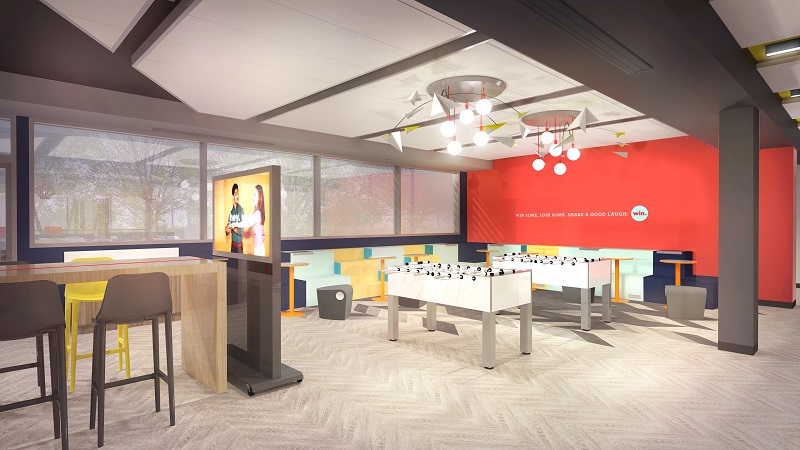
A rendering of the imagined Play Zone, which will feature table games, a large-screen TV and stadium seating on the first floor of a Tru by Hilton hotel.
Jaritz: We did extensive research when designing the Tru by Hilton brand, and invited several trusted Hilton owners to be part of the process to provide feedback along the way. Today’s consumer is looking for simplicity and value without compromising quality and design. Travelers are looking for better basics, efficiently designed hotel rooms and inviting common spaces to mingle and interact with others. We saw a real need for design-forward social and multi-functional common areas that appeal to value-conscious travelers.
Tru by Hilton features an open lobby composed of four zones, where guests can work, play, lounge and eat. Named “The Hive,” our first-floor experience is much more than a lobby—it’s over 2,800 square feet of open space with unique ways for guests to engage with others or spend time alone.
CPE: What market dynamics are shaping the demand for new (or significantly redeveloped) properties?
Jaritz: I have noticed two trends that shape the demand for new properties. First, there is a lack of consistency in the midscale space. What travelers are looking for, but are not getting, are quality hotel experiences wherever they go, with vibrant social spaces, minimal and meaningful design, forward-thinking technology and a great loyalty program.
We saw a void in the market for a product that’s easy to build, easy to operate and easy to maintain that provides a consistent quality experience. Tru by Hilton makes it easy for owners to offer a product guests will love, backed by a powerful commercial engine and our Hilton HHonors program. Built from the ground up with feedback from existing Hilton owners, Tru by Hilton is engineered for value and takes into account construction costs, operating margins, return on capital and reinvestment levels into assets to keep everything consistent.
When developing Tru by Hilton, we made smart design choices to limit the items that need upkeep and made those that do need reinvestments affordable. We’re offering a simplified experience without compromising on quality and design, with operational efficiencies in mind.
The second trend is related to how we define target audiences for hotel brands these days. We received great feedback on our cross-generational concept of Tru by Hilton, which speaks to a larger trend of appealing to travelers sharing a common mindset rather than a similar age. Tru by Hilton is designed for travelers with a youthful mindset, regardless of age. I think that’s where the industry is headed.
CPE: Could you describe an example or two of a recent significant development or redevelopment? What does the project tell us about larger development-related trends in the category?
Jaritz: Following the transition of Hampton by Hilton into the upper midscale tier, there was an opportunity in Hilton Worldwide’s portfolio to create a brand at the midscale price point. We estimate that we can reach approximately 18 million new travelers in addition to existing Hilton Worldwide guests with Tru by Hilton, which includes younger guests who will mature into other Hilton brands over time.
We offered the brand to our Hampton by Hilton owners first. Many existing Hampton owners applied to develop a dozen or more Tru by Hilton properties right out of the gate, after our brand launch at ALIS earlier this year. To me, this speaks volumes to how much they believe in the success of the brand and the opportunity they see in the midscale segment in general. It was also a great opportunity to reward our existing owners by giving them the first opportunity to build this new brand.
We have seen great interest across the U.S. in a variety of different location types, such as suburban, interstate and airport settings. In addition, our owners have shown interest for dual-branded Tru properties, particularly with Home2. It’s another way we have listened to our owners to help create the brand.

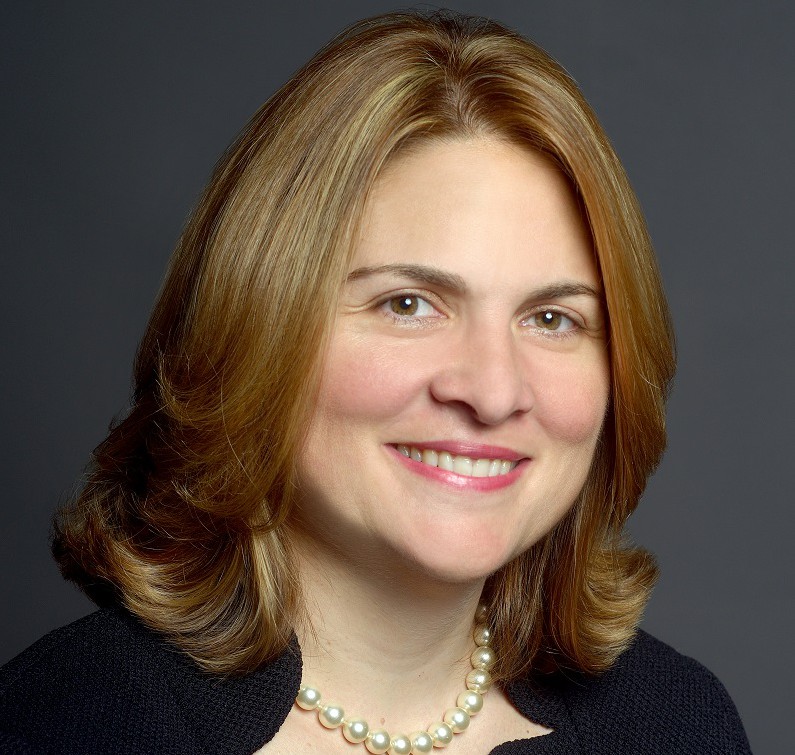
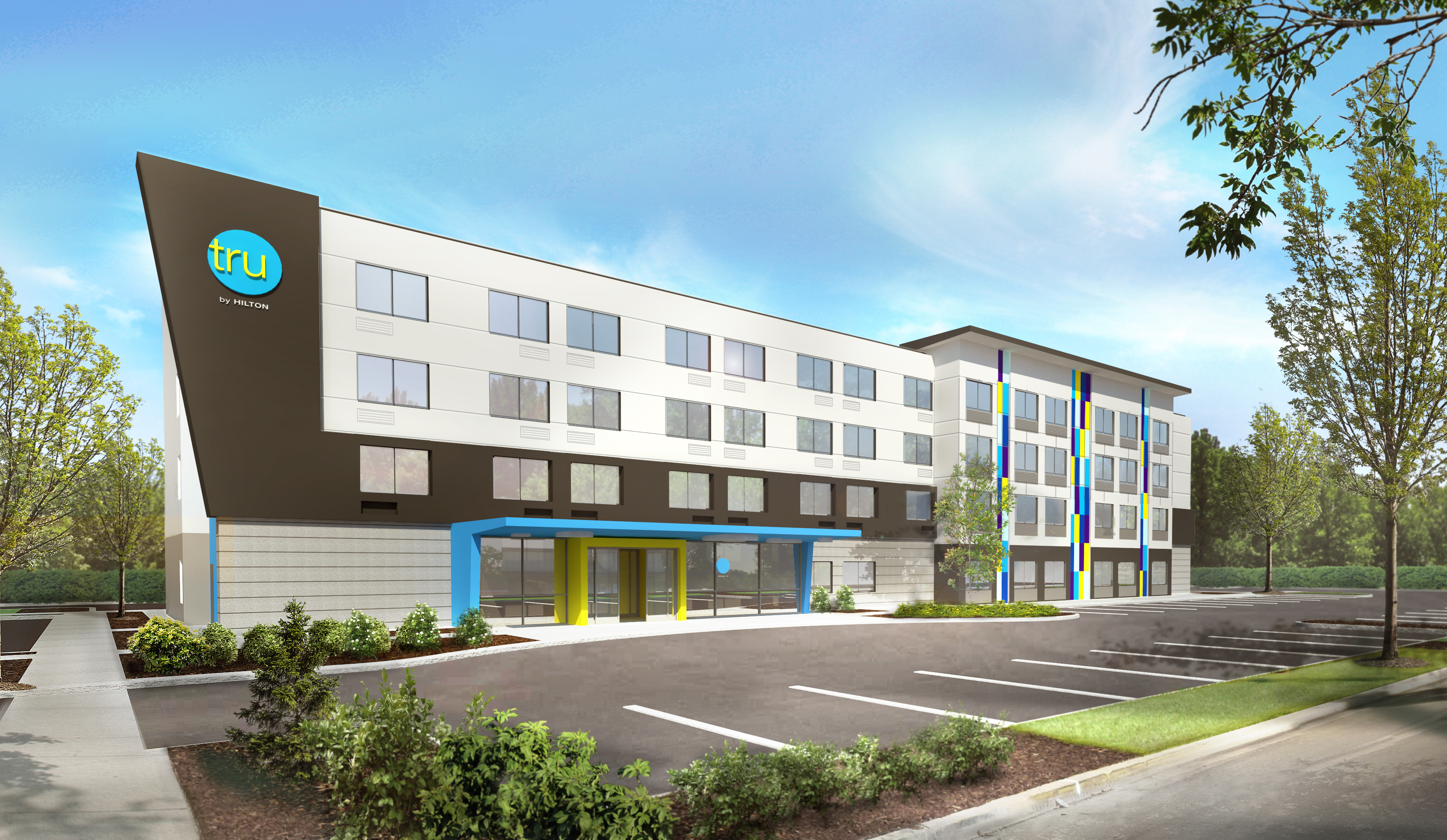
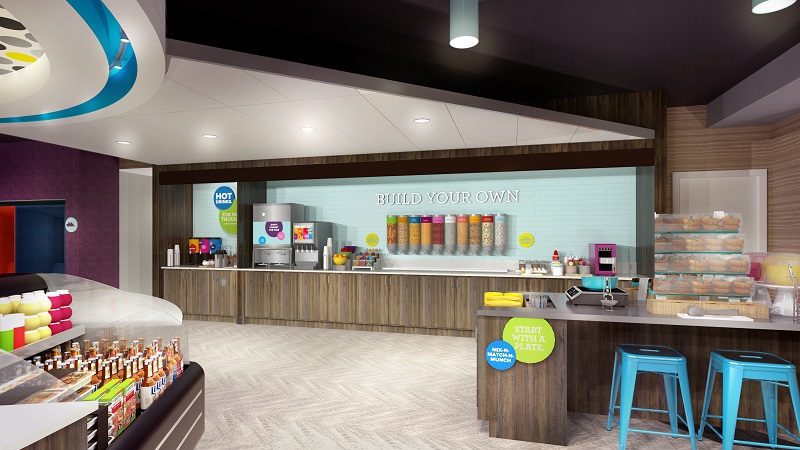




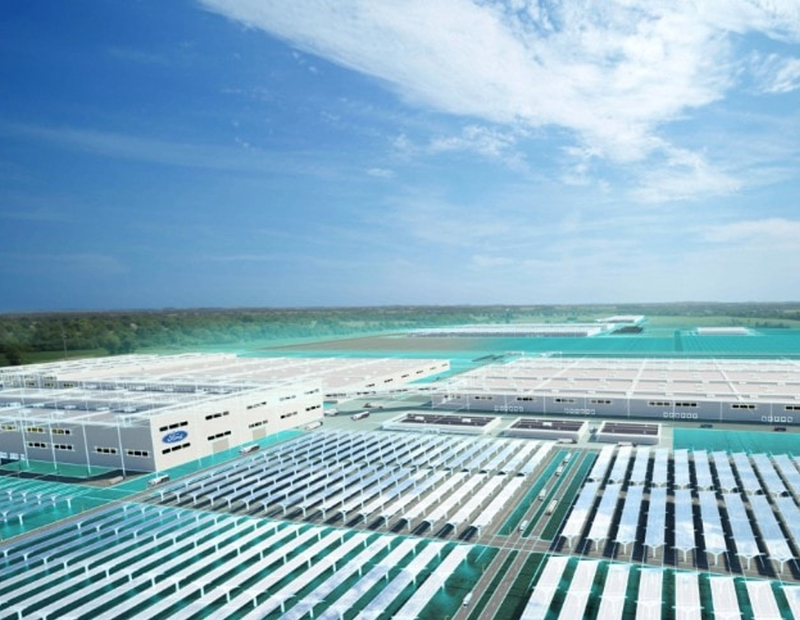
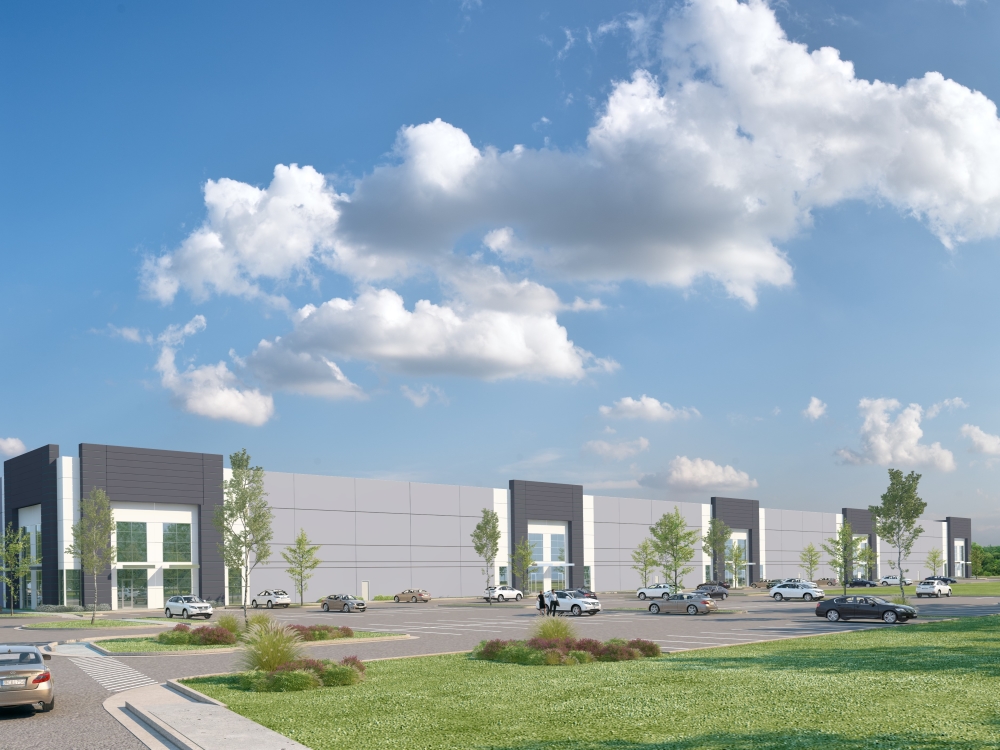
You must be logged in to post a comment.